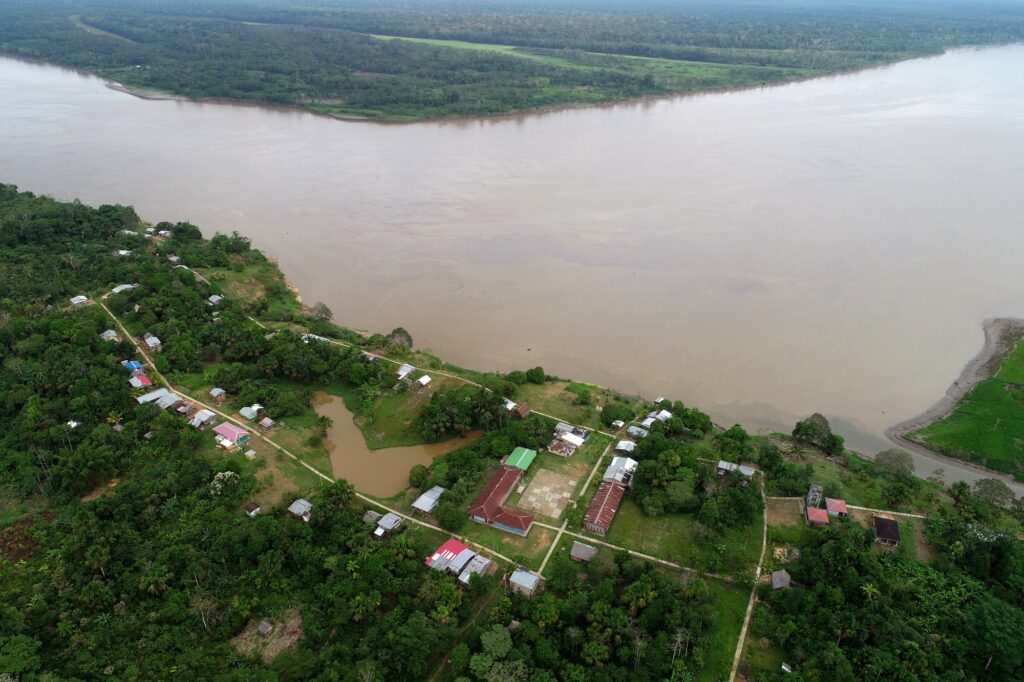The Private Conservation Area (2,621 acres), declared on August 20, 2020, aims to protect primary forests and tropical humid forests in ancestral territories. San Jorge del Río Marañón safeguards the biological diversity of the ecosystem and the streams that run through it, such as the Sapira stream that drains its black waters to the Marañon river.
The San Jorge Native Community is located in the state of Loreto, Peru in the lower part of the Marañón basin and is positioned in the communal land of the Kukama – Kukamiria indigenous people, and of the Tupi Guaraní linguistic family.
Kukama means “people of strength” or “people from there”, and Kukamiria means “Kukama of heart”.

The San Jorge PCA is home to an extraordinary biodiversity that is now safe in this territory. In these forests live the woolly monkey (Lagothrix lagothricha poeppigii) and the red howler monkey (Alouatta seniculus), both categorized as vulnerable species and the white-lipped peccary (Tayassu pecari), which is almost threatened. It is a refuge for a wide variety of reptiles and amphibians, including the near-threatened Stenocercus fimbriatus lizard, the hualo toad (Leptodactylus pentadactylus) and the crested toad (Rhinella margaritifera).
We congratulate our grantee Amazónicos por la Amazonía for this incredible accomplishment and for the hard work they’ve demonstrated despite obstacles presented by the current pandemic.
MAKE AN IMPACT
Learn how we can make an impact in our world together. Donate or get involved by subscribing to our email list:

